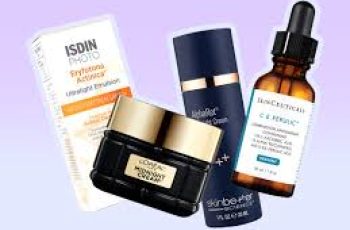Allure investigates the effect filler has on the soft tissues of the face, even after you stop injecting it. In some cases, “I don’t think you ever get 100% back to having no filler in your face,” says one expert.
In our three-part series, The Filler Files, Allure explores our relationship with facial filler. It’s still one of the most popular nonsurgical cosmetic procedures, yet more of us are looking to dissolve our filler than ever before. What does this mean for our lips, our cheeks, and our approach to injectables?
If you clicked on this headline, you likely have some relationship with hyaluronic acid fillers — the injectable gels, like Juvéderm and Restylane, that millions rely on to contour, plump, and smooth their features. Whether you’re a diehard fan or a casual acquaintance, you’ve probably wondered how these sugar-based substances behave inside the body and what actually happens when we decide to quit them after years of routine touch-ups.
In posing these questions to dermatologists and plastic surgeons, we discovered that there’s a frustrating dearth of formal studies investigating hyaluronic acid fillers over the long term — how and when they break down, the ways in which they change over time, and their effects on the quality of our skin and elasticity of our tissues, both during peak injectable use and long after we’ve sworn off the stuff. Given the paucity of hard data, much of what our experts shared is anecdotal — insights informed by their decades of experience injecting and dissecting the human face. Reliable intel, nonetheless.
In the interest of not burying the lede, we’ll start here: If you’ve been getting filler religiously for years, what happens when you stop will hinge on one critical factor: your average dose at each appointment. “People who are getting a syringe or two every 12 months — doing a little bit for specific points of volume replacement — they have a much easier time than those who are receiving 5 to 10 syringes every six months, because they’re not getting to a place of overinflation and tissue distortion,” says Jessica Weiser, MD, a board-certified dermatologist in New York City.
And make no mistake: Countless men and women are walking around with gluts of filler under their skin. While Dr. Weiser’s self-imposed limit for a single session is “two or very rarely three syringes,” she believes she is somewhat of an outlier among injectors. “There are tons of doctors doing 10 syringes at a time,” she tells us. Some of the other physicians we spoke to confirmed that they commonly encounter patients who’ve received 20 or even 50-plus syringes of hyaluronic acid over a one- to two-year span.
When “patients come in with too much filler in their faces, it can be almost disfiguring,” says Lara Devgan, MD, a board-certified plastic surgeon in New York City. The problem can be more than skin-deep, affecting both the look of the face and its functionality. It’s so common that there’s a term for it: “filler fatigue.”
Board-certified ophthalmologist and oculoplastic surgeon Mitesh Kapadia, MD, describes the overfilled face as “an epidemic” for which a growing number are now seeking a cure — namely, hyaluronic acid-melting hyaluronidase, a synthetic version of an enzyme found in the body. You’ve no doubt seen celebrities, like Courteney Cox and Amy Schumer, talking openly about being displeased with the look of their outsize cheeks or lips and having their filler dissolved with this injectable solution. They’re hardly alone. According to The Aesthetic Society’s most recent trend report, their members performed 57% more filler reversals in 2021 than they did the year before. Indeed, a common refrain among cosmetic providers is that they’re spending more time dissolving filler than injecting it.
What’s behind the about-face? “People are realizing that they’re not looking better, but looking odd,” says Elizabeth Houshmand, MD, a board-certified dermatologist in Dallas. It may be an old photo or a well-meaning family member that helps them see the error of their ways. Or a complication will clue them in, as they notice their filler migrating or swelling. Often, though, they can’t pinpoint the exact problem, Dr. Weiser says; they just know “that things feel strange.”
Sometimes, people break up with filler not because they’re overfilled, per se, but because they’re over filler — the look, the upkeep, the headaches — and this too is a form of fatigue. The filler becomes oppressive, a burden. “Especially when they’ve been through bad injectables and dissolving, they just don’t want to deal with it anymore — they’re done,” says Jonathan Cabin, MD, a board-certified facial plastic surgeon in Arlington, Virginia. In other cases, the filler has just exhausted its usefulness, no longer able to obscure insecurities in a natural-looking way and compelling once-loyal users to pursue a more powerful solution, like surgery.
DQH Knowledge drop: In your 20s, your skin cell turnover decreases. (Cell turnover is a key component in keeping your skin youthful.) You know what else slows down? Your collagen production. Starting in your 20s, collagen decreases by about 1 percent per year. Should you want to prevent fine lines and wrinkles, start by eliminating behaviors that contribute to premature aging. “If it’s bad for you, it’s bad for your skin,” says dermatologist Michel Somenek.
“Cigarette smoking reduces blood flow to the skin and causes premature wrinkling and a dull skin texture. Making the repeated pursed motion to inhale can also cause smoker’s lines. Alcohol and recreational drugs are toxins for the skin that damage its cellular structure and DNA,” Somenek tells us. “The faster you eliminate vices while you are young, the better chance your skin and body have to recuperate.” Also, adopting an anti-aging routine in your 20s is key. After all, the best offense is a good defense. We spoke to Somenek and experts Joshua Ross and Audrey Kunin to find out more.
Keep reading for the best anti-aging products for your 20s, according to skincare professionals.
Sunscreen
“We all know that the sun is the number one cause of skin aging and starting the prevention in your 20s is very important,” Ross says. “The majority of your sun damage won’t start to appear until you’re in your 30s, so don’t wait until you see it surface or you’ll be behind the curve. Stay ahead of it with a good-quality zinc-based sunscreen worn daily.”
Farmacy Green Defense Daily Mineral Sunscreen
An invisible sunscreen with SPF 30, plus botanical extracts meant to protect skin with tons of antioxidants. Bonus: It’s clean and fine to use under makeup.
Bareminerals Complexion Rescue™ Tinted Moisturizer Broad Spectrum SPF 30
Although we recommend you use your SPF and moisturizer separately, we also understand moments when you don’t have time or energy for that extra step. For those times, this bareMinerals moisturizer is a great thing to have on hand.
Vitamin C Serum
“A great introduction to anti-aging is to start with a vitamin C serum in your morning skincare routine,” Ross says. “It’s a powerful antioxidant that will neutralize free radicals and brighten the skin.” He adds that it’s a great way to counteract the effects of the sun’s harmful rays, which, as previously mentioned, are among the biggest causes of premature aging.
Drunk Elephant C-Firma™ Vitamin C Day Serum
The Drunk Elephant C-Firma is a lightweight serum that promises to give skin a glow by combining the brightening powers of vitamin C with ferulic acid, l-ascorbic acid, and vitamin E. The included sodium hyaluronate is meant to replace hydration loss, so you shouldn’t have to deal with any irritation.
Sunday Riley C.E.O. Rapid Flash Brightening Serum
This potent serum is jam-packed with vitamin C (15 percent, to be exact), which means it’s a potential superstar at both brightening skin and dousing it in antioxidants.
Peptides
Using peptides on your skin has many benefits, says Somenek. “The skin barrier is what defends the body against pollution, UV rays, bacteria, and toxins. It can be damaged by several everyday factors. Using topical peptides aids in building a stronger barrier,” he says. “Peptides comprise elastic fibers, which are a type of protein. These fibers help to make skin appear taut and firm. Peptides can also help repair damaged skin, relieve inflammation, and even out skin tone. Some peptides can kill acne-causing bacteria that is common in 20-somethings.”
Kunin agrees, saying, “Peptides are an excellent entry point for supporting collagen.” She recommends looking for face and eye treatments that contain these collagen-boosting powerhouses.
Charlotte Tilbury Magic Eye Rescue Cream
This Charlotte Tilbury super-emollient eye cream has a base of coconut oil and shea butter (read: it’s incredibly hydrating). Botanicals plus peptides are meant to help reduce dark circles and boost collagen, respectively.
This creamy moisturizer serves up potent collagen-boosting peptides and pycnogenol, and antioxidant-rich vitamin C. “Instead of sitting on top of the skin, peptides penetrate the outer layer so they go deep. The ‘signals’ they send tell the cells to produce elastin and collagen, which are needed for youthful-looking skin,” explains Somenek.
At-Home Peel Pads
Remember that skin cell turnover fiasco we talked about earlier? One way to help support it is by exfoliating. “Exfoliation is important to help keep skin fresh and luminous,” Kunin says. She recommends using at-home peel pads as an easy and effective way to exfoliate.
“The goal in your 20s is to fight the slowing pace of cell turnover. It is wise to use products that gently exfoliate, yet still remove oil and other impurities. Products that have Alpha Hydroxy Acids (AHA) or Beta Hydroxy Acids (BHA) are a good choice.”
According to Somenek, you should only exfoliate two to three times a week. “People of all ages are guilty of over-exfoliating and that can be too much of a good thing,” he says.
Dermadoctor Kakadu C Intensive Vitamin C Peel Pad
A few swipes of this Derma Doctor powerful peel pad promise to leave your skin glowing and smooth, thanks to the seven (yes, seven) types of chemical exfoliants, including AHA and BHA. It also contains vitamin C via Kakadu plum extract for added brightening and antioxidant protection.
KEY INGREDIENTS Kakadu plum extract is sourced from the Kakadu plum, a fruit grown in northern Australia. It contains vitamin C, which restores the skin’s natural barrier, increases collagen production, and soothes irritation.
Dr. Dennis Gross Skincare Alpha Beta® Universal Daily Peel Pads
These are the gold standard of peel pads, with a cult following and over 900 five-star reviews on Sephora. They’re easy to use and contain a blend of anti-aging exfoliating acids.
Emollient Night Cream
“In your 20s, you need to start upping the hydration in your skincare routine. You may have been cautious of over-moisturizing because of acne in your teens, but as you enter your 20s, your skin transitions and becomes drier,” Ross says. “I recommend an emollient night cream added into your evening skincare regimen.”
“Twenty-somethings need to make sure that they are not using creams that will clog their pores and cause excess oil production,” says Somenek. Opt for non-comedogenic products.
Cerave Skin Renewing Night Cream
One great choice is the CeraVe Skin Renewing Night Cream, which is a non-comedogenic night cream that leaves skin soft and glowy. It combines the moisturizing powers of ceramides and hyaluronic acid.
RoC Retinol Correxion Max Hydration Creme
“The best night cream ingredients contain retinol, benzoyl peroxide, and/or salicylic acid or hyaluronic acid. The goal is to moisturize, yet remove excess oil,” says Somenek. This Roc Retinol Correxion cream fits the bill as it contains both hyaluronic acid and retinol so it promises to moisturize while also being non-comedogenic.



